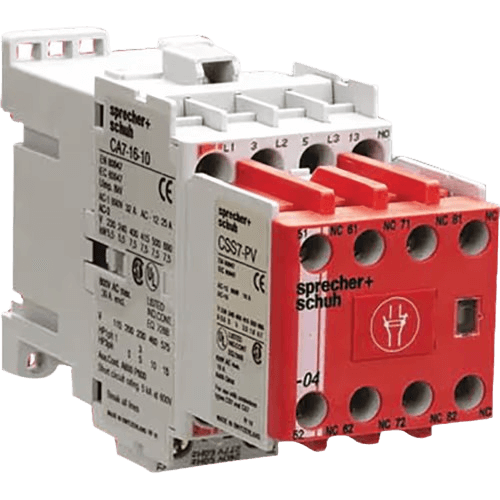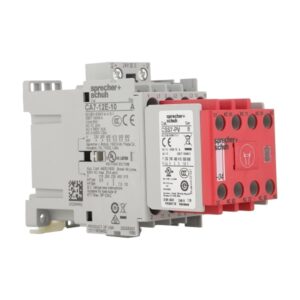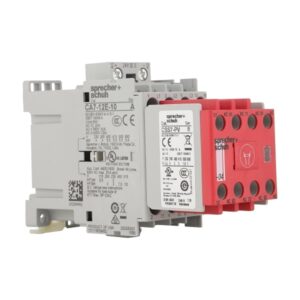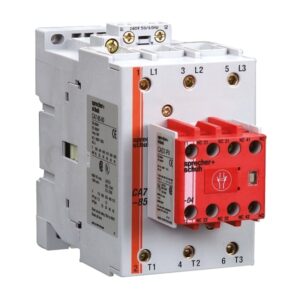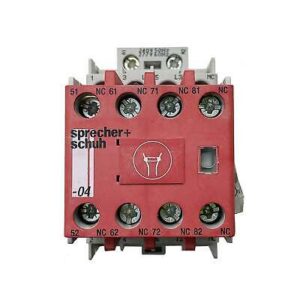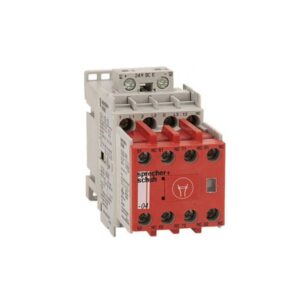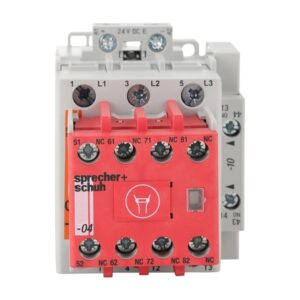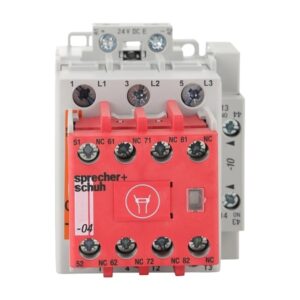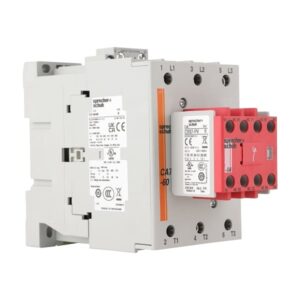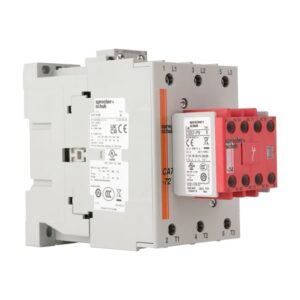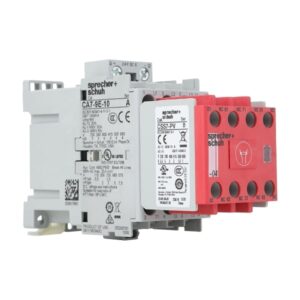Safety Contactor The Importance of Safety Contactors Safety vs. General-Purpose Contactors Safety contactors are purpose-built to meet the stringent demands of industrial safety systems. Unlike…
Safety Contactor
The Importance of Safety Contactors
Safety vs. General-Purpose Contactors
Safety contactors are purpose-built to meet the stringent demands of industrial safety systems. Unlike general-purpose contactors, which simply control electrical loads, safety contactors are designed to ensure safe disconnection in case of a fault or emergency. They often feature mechanically linked auxiliary contacts and positively driven operation, making them essential in systems that require safety circuit redundancy and fail-safe operation.
Role in Machinery Safety
In industrial environments, safety contactors play a crucial role in machine guarding, emergency shutdown, and automated fault isolation. Whether it’s stopping hazardous motion or isolating power during maintenance, a safety contactor acts as a reliable safety interface in machinery risk reduction strategies. This functionality makes them indispensable in automated manufacturing lines and robotic systems.
Emergency Power Disconnection
When connected with emergency stop buttons or light curtains, safety contactors provide immediate power isolation to dangerous equipment. This is critical in preventing injuries during unexpected operational failures. The inclusion of a Hokuyo safety laser scanner, for instance, adds advanced detection capabilities that, when coupled with a safety contactor, forms a robust emergency disconnection system.
Key Features of Safety Contactors
Performance and Reliability
Designed for industrial applications, safety contactors must operate under demanding conditions. Features like high switching capacity, long electrical life, and resistance to environmental stress ensure dependable performance. Models are available with 3-pole and 4-pole configurations, and support standard voltages including 24V DC and 110V AC to suit various safety control systems.
Safety Certifications and Standards
Compliance with international safety standards such as IEC 60947-4-1 and ISO 13849 is essential. Certified safety contactors include safety-rated auxiliary contacts, redundant circuits, and support integration with dual-channel safety monitoring relays. These certifications guarantee suitability for Category 4 and Performance Level e safety circuits.
Selecting the Right Safety Contactor
Importance of Correct Model Selection
Choosing the appropriate safety contactor depends on several factors: load current, control voltage, application type, and the need for auxiliary contact blocks or overload protection. Users should also consider if the contactor is to be used in a machine control center (MCC) or a standalone safety application.
Notable Safety Contactor Models
Sprecher + Schuh Safety Contactors
Sprecher + Schuh models are recognized for integrating seamlessly with electrical and motor control systems. With compact dimensions, they offer features like mechanical interlocks, auxiliary contacts, and compatibility with overload relays, ideal for use in safety circuits with frequent stop-start cycles.
Safety Contactor Applications
Usage in Machine Control Centers (MCCs)
Safety contactors are standard components in machine control centers, enabling centralized and safe power distribution. Their ability to disconnect multiple motors or drives with a single control signal streamlines system safety architecture in complex installations.
Advanced Design Features and Installation Flexibility
Modern safety contactors offer a comprehensive product range designed to meet the diverse needs of industrial safety systems. These devices handle electrical loads, including high-current and high-power loads, ensuring safe and efficient switching in demanding applications.
A key safety innovation is the use of mirror contacts and integrated mirror contacts, which ensure reliable operation of emergency stop circuits. These contacts provide critical feedback capabilities to the control system, allowing for contacts for feedback circuit monitoring and real-time contactor status verification. This is essential when configuring emergency stops and emergency stop button integrations into control panel design.
Most units support various coil options and customisable options, offering flexibility in installation options for electrical panels of any size or complexity. Engineers can choose from multiple control supply voltage levels, ensuring compatibility across different control voltage branches. High insulation voltage ratings and certified protection ratings further guarantee safety under continuous operation.
To aid installation, features such as closed terminal designs and clearly marked control terminals simplify wiring. Many models follow a color code standard, often using an eye-catching yellow color for safety components, improving visibility and reducing wiring errors during panel assembly.
For those seeking efficient energy usage, advanced contactors may include an energy auxiliary function that monitors consumption and helps reduce energy costs. Combined with a comprehensive range of options and accessories, these devices are ideal for streamlined integration and enhanced safety.
Whether you’re upgrading existing systems or designing a new control panel layout, referencing an industry tech tip or control panel design guide ensures you leverage the full capability of today’s safety contactor technology.
